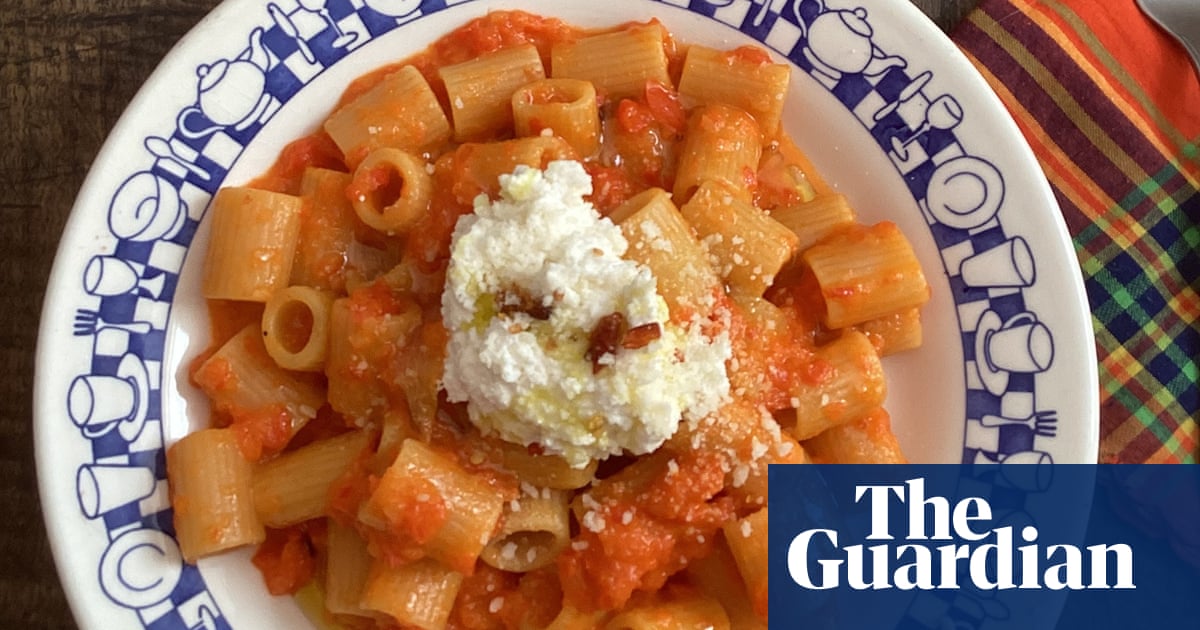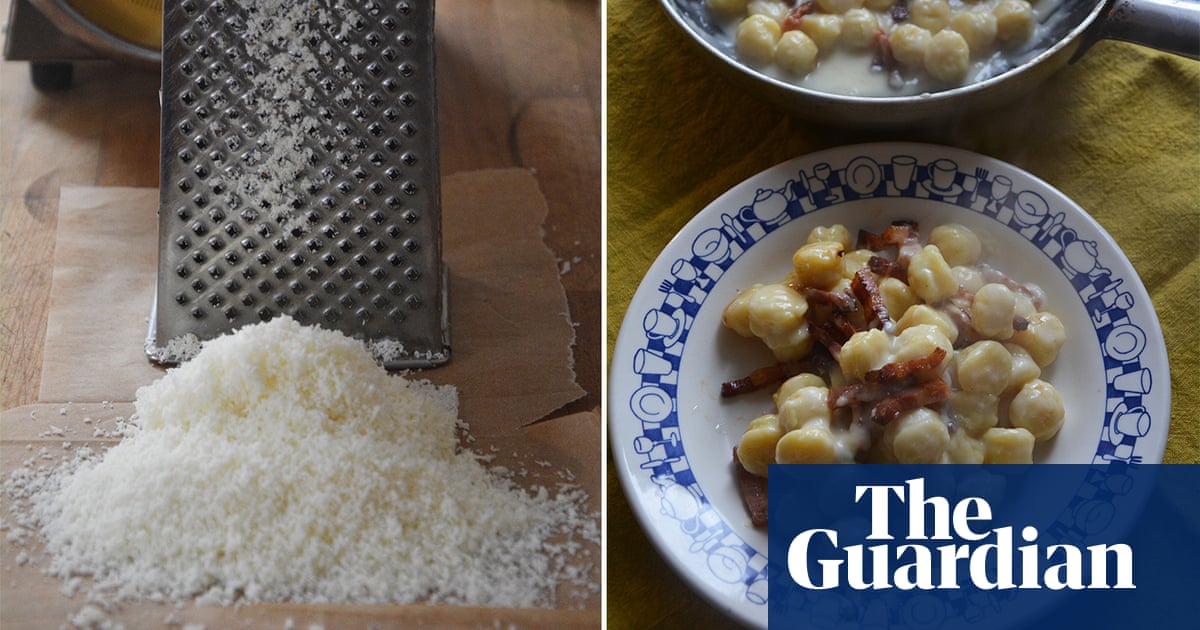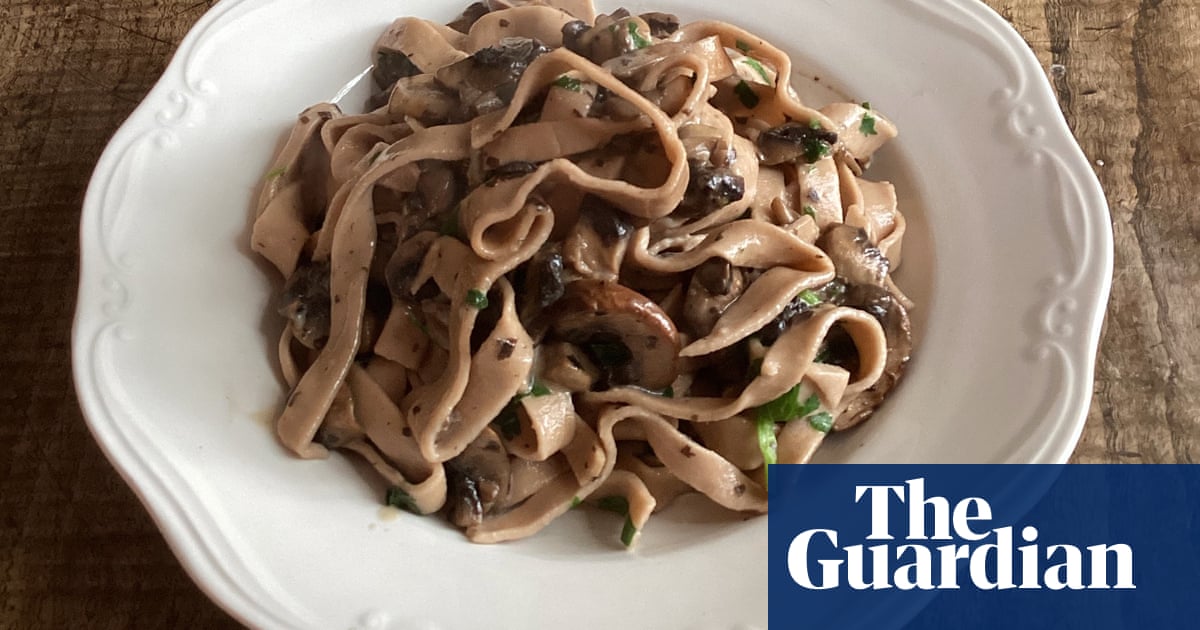
After years of driving past and reminding each other that “one day we should stop here for lunch”, we finally did. We turned off Via Ternana, a few hundred metres before Poggio Mirteto station in Lazio, and into a wide, informal car park where we immediately found a spot by the wall with sun and the words “Ecofattorie Sabine” painted on it. Words on green awnings promised local products, which in an area packed with olive trees and busy with sheep are welcome. Two women were setting tables outside, and the air carried the smell of just-lit charcoal.
Someone must have done experiments looking at the endorphins released when people walk towards lunch; the reasons behind the euphoria felt on nearing the door of a restaurant, cafe or pub, and how it differs depending on whether it is somewhere familiar or new. Add hunger to the mix, as well as the sound of cutlery and the distant smell of sheep, meaning the promise of pecorino. And where there is pecorino, there is its soft, white byproduct, the result of reheating the leftover whey to make ricotta di pecora (sheep’s milk ricotta). There were more endorphins when we, inexperienced new dog owners, allowed our small creature too close to the handsome reigning dog. As it turned out, she wanted only to make it clear who was in charge before returning to her spot in the unflinching sun. I did, however, need a seat at one of the wooden tables and a glass of wine after that.
If someone has researched near-the-door endorphins, they must have looked at sitting-down-and-putting-knees-under-the-table endorphins, too. Also, what happens chemically when you first glance at a menu, take the first sip of wine and taste of bread, which surely triggers something calming. We ordered local salami, which came with just-baked buns the size of pin cushions and speckled with cheese. After that, fat potato gnocchi and tomato sauce for Luca and Vincenzo, fettuccine alla pecorara for me, then lamb cooked on the grill outside. But back to the pasta, a simple recipe of great goodness.
“Alla pecorara” translates as “shepherd’s style”. It is a dish most famous maybe in the neighbouring region of Abruzzo, and most notably in the province of Pescara, where it means pasta – often homemade rings called anelli – with tomatoes, other vegetables and sheep’s milk ricotta. However, in Lazio and especially Sabina, pasta alla pecorara means ricotta, pecorino and guanciale – and, at Ecofattorie Sabine, hand-rolled fat ropes of pici or ribbons of fettuccine. What is interesting about their version is that they use a meat slicer to cut the guanciale, which means it is incredibly thin and so fries into almost-crisps that shatter. Wonderful, but at home I prefer fatter batons.
Pasta alla pecorara
Serves 4
200g guanciale, or pancetta or bacon
300g ricotta – sheep’s or cows’ milk
40g pecorino romano
Black pepper
400g pasta (mezze maniche, penne, pici, fettuccine)
Put a pan of water on for the pasta. Cut the guanciale into short batons, put into a pan over a medium-low heat and fry gently until light golden and some fat has rendered out. (If you are using pancetta or bacon, fry it in a little olive oil.) Lift out the guanciale and set aside, then pour off the fat and keep that, too.
Once the water is boiling, add salt, stir, then add the pasta and set the timer.
In a large, warm bowl, mash the ricotta with the pecorino, lots of black pepper and two tablespoons of the guanciale fat. Stir, taste to see if it needs salt, then lift the cooked pasta directly into the ricotta and toss, cautiously adding a little of the pasta cooking water if you think it needs loosening. Divide between bowls, top each serving with some of the crisp guanciale and serve with red wine and bread for calmly cleaning the bowls.
UK readers: click to buy these ingredients from Ocado












